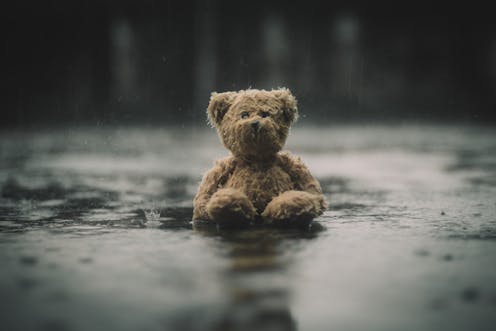Source: The Conversation (Au and NZ) – By Anthony Jorm, Professor emeritus, The University of Melbourne

Two major reports on mental health and suicide released this week suggest two very different solutions to preventing suicides.
One, from the House of Representatives Select Committee on Mental Health and Suicide Prevention, recommends putting more resources into the mental health workforce. This includes recruiting and training more health professionals.
This might sound commendable, but I argue the evidence shows this is unlikely to work.
The other report, from the Australian Institute of Health and Welfare (AIHW) released today, provides the latest data on suicide and self-harm. This report makes no recommendations about preventing suicide. However, it identifies child abuse and neglect as a major modifiable risk factor for suicide right across the lifespan.
This approach to preventing suicide, involving removing the underlying causes, has more evidence to back it. Yet this was barely mentioned in the select committee report.
Read more:
We asked 9,000 Australians about their mental health needs post-COVID — this is what they want
More health workers unlikely to reduce suicide
In my own submission to the select committee report, I argued increasing treatment resources is unlikely to reduce rates of suicide.
Over the past 15 years or so, Australia has substantially increased spending on mental health services and expanded the mental health workforce considerably.
However, the suicide rate has been trending upward over this period. The AIHW report noted that between 2003 and 2019, the loss of life due to suicide increased by 13%.
It could be argued suicide would have risen even more over this period without the increase in services or the increase in services has not been sufficient to meet demand.
However, an examination of long-term suicide trends in Australia over three decades show no evidence various implemented service innovations and mental health policies have had any impact.

Shutterstock
While it might be expected treating mental health problems with talk therapy or medication would reduce suicide deaths, there is very little evidence from randomised trials to support a reduction in suicide as a result of treatment.
A major limitation of any attempt to reduce suicide is that suicidal feelings often arise relatively quickly in response to overwhelming events. These include relationship breakdown, loss of a job, financial crisis or trouble with the law.
Suicidal actions can also be impulsive. This may be particularly the case for males and is more likely when the person has been using alcohol. In such circumstances, if a mental health professional was present, they may be able to support the person and prevent a suicide.
However, in practice, it is unlikely a professional will be present when a crisis occurs. This is why it is important everyone in the community has basic suicide prevention skills, as they may be in the best position to provide support on the spot.
Read more:
How to ask someone you’re worried about if they’re thinking of suicide
Could preventing child abuse and neglect work?
The AIHW estimates child abuse and neglect account for around a third of the burden of suicide and self-harm in females and around a quarter in males. “Burden” refers to the combined effects of suicide and self-harm on years of life lost and disability.
However, this is only a theoretical calculation based on what would occur if child abuse and neglect could be eliminated. The AIHW report does not suggest how Australia could go about reducing, let alone eliminating, this risk factor.
Read more:
Complex trauma: how abuse and neglect can have life-long effects
Reducing child abuse and neglect sounds like a difficult task and any benefits for suicide prevention would take decades to see.
However, there is evidence it is possible to reduce this and other childhood adversities that increase risk for suicide.
The Centre for Research Excellence in Childhood Adversity and Mental Health, with which I am affiliated, has reviewed the international evidence.
We found high-quality evidence for a number of interventions to reduce these adversities or lessen their impact on children.

Shutterstock
To find out which interventions would best suit Australia’s needs, we convened a panel of experts and sought their consensus on national priorities.
The experts’ recommendations included:
-
training programs to improve the quality of parenting
-
home visiting programs where a nurse visits at-risk families with young children
-
school programs to prevent bullying
-
psychological therapies for children exposed to trauma.
These programs can work in various ways to protect children. These include improving the capacity of parents to care for themselves and their children, reducing adverse events such as bullying, and reducing the impact of adversities once they have occurred.
Read more:
Treating a child’s mental illness sometimes means getting the whole family involved
Where to next for suicide prevention?
On the surface, training more mental health professionals and providing more services seems a plausible approach to preventing suicide that is relatively easy to implement. However, the evidence does not support this actually works.
There is no one approach of achieving a lasting reduction in suicide in Australia. The causes of suicide are complex and require a multi-pronged solution.
However, reducing childhood adversities is part of the solution that has been neglected. Australia needs to give it greater priority.
If this article has raised issues for you, or if you’re concerned about someone you know, call Lifeline on 13 11 14.
![]()
Anthony Jorm holds a National Health and Medical Research Council Investigator Grant. He is a Chief Investigator on the Centre for Research Excellence on Childhood Adversity and Mental Health which receives funding from the National Health and Medical Research Council and Beyond Blue. He is also an unpaid Director of Mental Health First Aid International, Editor-in-Chief of Mental Health & Prevention, Chair of the Research Committee of Prevention United and a member of the Alliance for the Prevention of Mental Disorders.
– ref. Recruiting more mental health workers won’t stop suicides. Preventing child abuse and neglect will – https://theconversation.com/recruiting-more-mental-health-workers-wont-stop-suicides-preventing-child-abuse-and-neglect-will-171110








